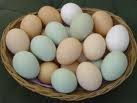 I hope everyone had a great Thanksgiving. Its hard to believe that December is here, the first decade of the millennium is almost over. The weather in the northeast has been wonderful and when winter finally hits, its nice to know that November has been kind to us. November was also busy for Park Hill Chefs and its new endeavor Park Hill Pups (homemade birthday cakes for the four legged family member, but that's a story for another day.)
I hope everyone had a great Thanksgiving. Its hard to believe that December is here, the first decade of the millennium is almost over. The weather in the northeast has been wonderful and when winter finally hits, its nice to know that November has been kind to us. November was also busy for Park Hill Chefs and its new endeavor Park Hill Pups (homemade birthday cakes for the four legged family member, but that's a story for another day.)One of the things that I did in November was teach a couple of cooking classes which included menu planning and healthier cooking ideas. I wanted to show a technique of de-boning and brining chicken breast and then stuffing it. With Thanksgiving around the corner I did not want to make a typical stuffing so on the recommendation of a colleague, I looked into a healthier alternative and used "Quinoa" (pronounced “keen-wa”), thanks Chef Lester!

While most people think of quinoa as a grain, it is actually a seed originating in Peru and grown in South and Central America. Its use can be traced back to 3000 b.c. It was one of the three staple foods, along with corn and potatoes, of the Inca civilization. Some of the crop is now also grown in the US and Canada. Quinoa has a high protein value; complete with all eight of the essential amino acids required by humans. It is a excellent meat substitute for those following a vegetarian or vegan diet. It is also an above average source of vitamins and minerals. Quinoa is gluten free and is also a good source of fiber. It is a very versatile and can be used in dishes ranging from breakfast, to soups, entrees and even desserts.
Now I had used quinoa before but mostly as a side and I found it to be a little bit on the bland side. I underestimated the versatility of it uses and was very pleased when I tested the recipe I put together for the stuffing. It has a unique crunchiness similar to a wild rice but with about a third of the cooking time. You can also find it in many stores and it is no longer relegated to the health food store. Be sure to read the directions on the package as most brands need to be rinsed off before using to remove the bitter tasting dust that covers the seeds. There are three basic types of quinoa. The basic one is cream colored and is the most common one. There is also a red quinoa which has a slightly more bitter taste and is a bit crunchier. The black quinoa has a more earthy taste. I suggest trying all three to find the one that best suits your taste.
For the stuffing recipe I have used both red and cream quinoa and prefer the red type. This dish can also be served as a standalone entree or as a side.
Quinoa Stuffing

2 Cups Quinoa
1 Large onion Diced
2 Stalks Celery Diced
2 Carrot Sticks Diced
4 Cups water (for added flavor use Chicken Stock or Vegatable Broth)
2-4 Tbs. Butter
½ Cup Chopped Walnuts
½ Cup Dried Cranberries
2 tsp Poultry Seasoning
S&P tt
Sauté Onions, add carrots and celery
Add Poultry Seasoning
Turn off heat
In separate pan bring stock or water to boil
Add Quinoa to liquid, return to boil.
Simmer 15 minutes until moisture is absorbed. Add mirepoix, (onion/celery/carrot mixture) walnuts and cranberries stir and remove from heat.
Serves 4-6
Chef Rob






























